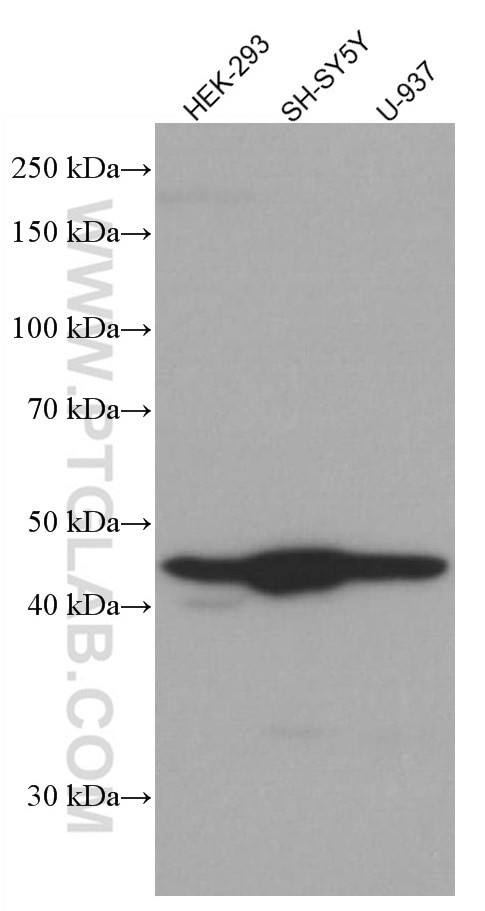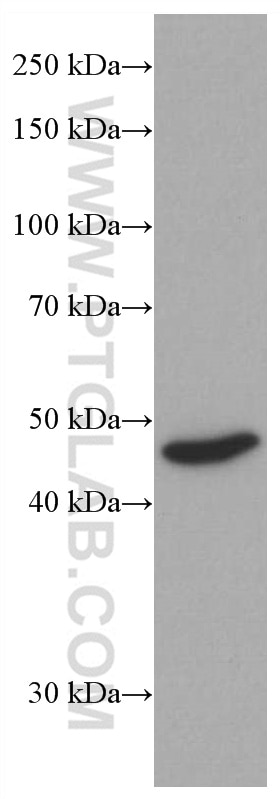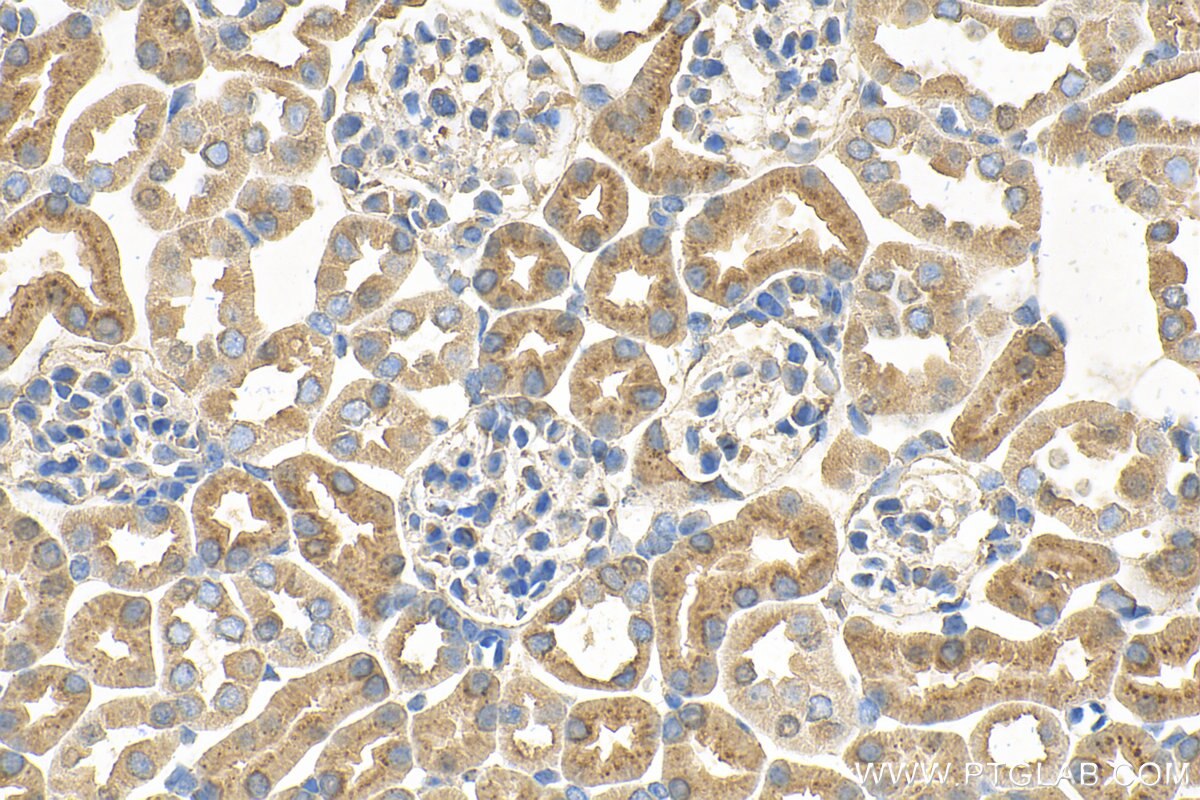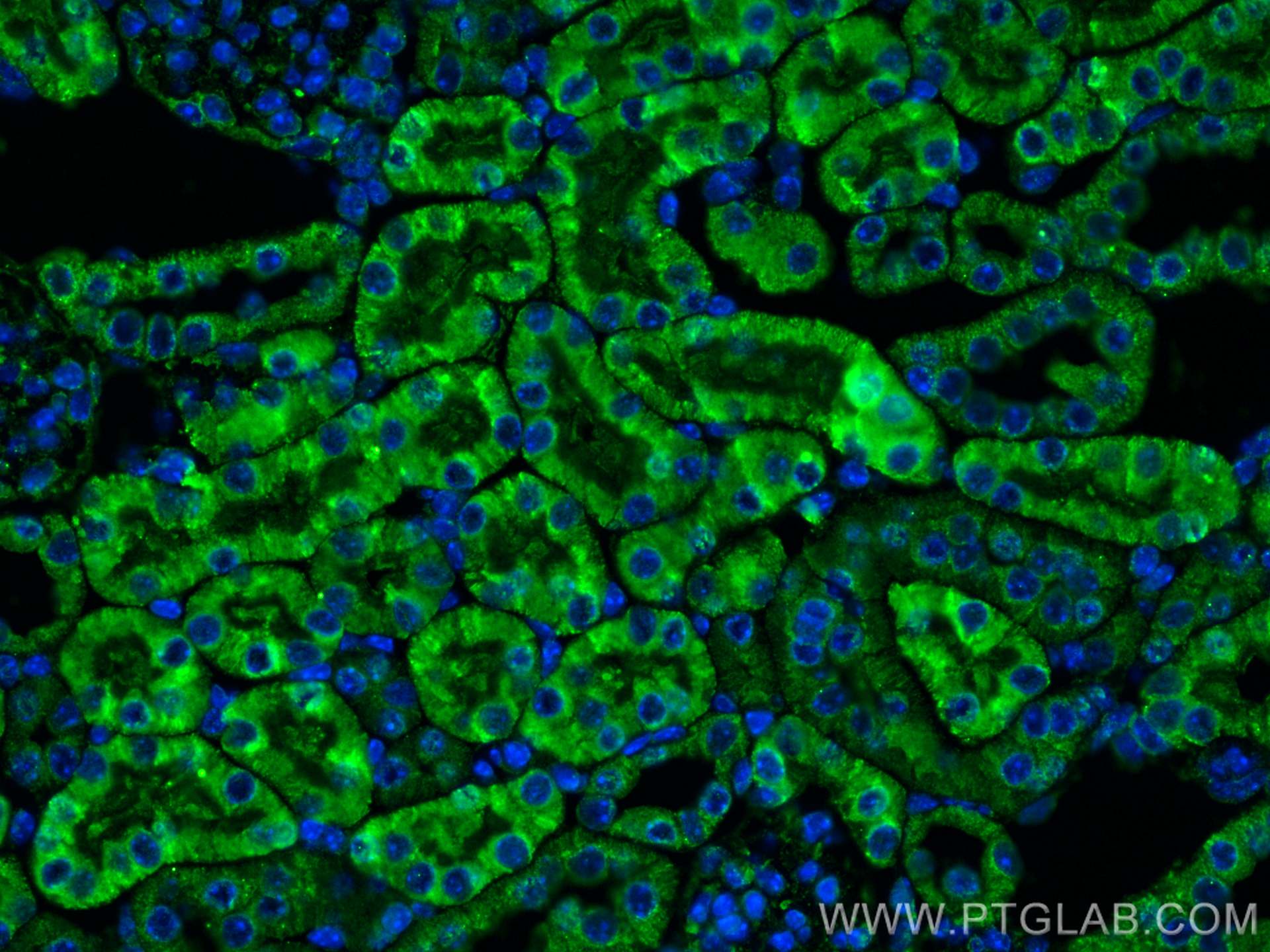Product Information
66915-1-PBS targets CX3CR1 in WB, IHC, IF-P, ELISA applications and shows reactivity with human, mouse samples.
| Tested Reactivity | human, mouse |
| Host / Isotype | Mouse / IgG1 |
| Class | Monoclonal |
| Type | Antibody |
| Immunogen |
CatNo: Ag27698 Product name: Recombinant human CX3CR1 protein Source: e coli.-derived, PET28a Tag: 6*His Domain: 56-231 aa of BC028078 Sequence: LTNSKKPKSVTDIYLLNLALSDLLFVATLPFWTHYLINEKGLHNAMCKFTTAFFFIGFFGSIFFITVISIDRYLAIVLAANSMNNRTVQHGVTISLGVWAAAILVAAPQFMFTKQKENECLGDYPEVLQEIWPVLRNVETNFLGFLLPLLIMSYCYFRIIQTLFSCKNHKKAKAIK Predict reactive species |
| Full Name | chemokine (C-X3-C motif) receptor 1 |
| Calculated Molecular Weight | 40 kDa |
| Observed Molecular Weight | 44 kDa |
| GenBank Accession Number | BC028078 |
| Gene Symbol | CX3CR1 |
| Gene ID (NCBI) | 1524 |
| RRID | AB_2882242 |
| Conjugate | Unconjugated |
| Form | Liquid |
| Purification Method | Protein G purification |
| UNIPROT ID | P49238 |
| Storage Buffer | PBS only, pH 7.3. |
| Storage Conditions | Store at -80°C. |
Background Information
CX3CR1, also known as GPR13, V28, and fractalkine receptor, belongs to the 7-transmembrane G protein-coupled receptor (GPCR) family. It is expressed in microglia, astrocytes, NK cells, monocytes/macrophages, and a subpopulation of T cells. CX3CR1 is the receptor for fractalkine (CX3CL1) and mediates both its adhesive and migratory functions. It also acts as a coreceptor with CD4 for HIV-1 virus envelope protein (in vitro), and some variations in the gene of CX3CR1 lead to increased susceptibility to HIV-1 infection and rapid progression to AIDS. Defects in CX3CR1 are a cause of susceptibility to age-related macular degeneration type 12 (ARMD12).










